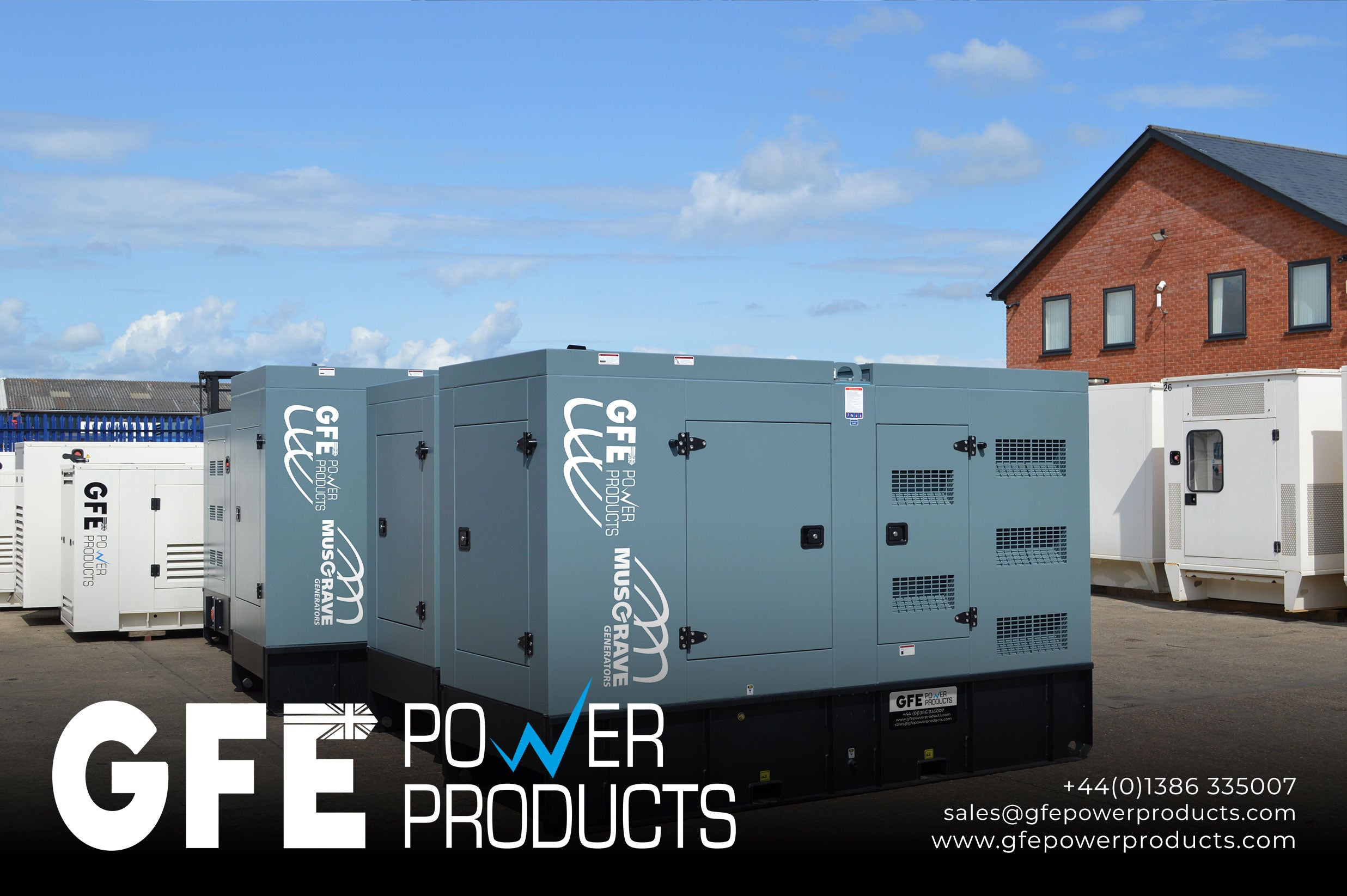
What Are The Key Components Involved In Synchronised Generators?
Synchronisation involves various components, including synchronising relays, synchronising panels, voltage regulators, and governor controls. These components work together to measure and adjust the voltage, frequency, and phase of each generator to match the existing electrical system.
What are synchronised diesel generators?
Synchronisation of diesel generators is the process of connecting multiple generators together in an electrical system to operate in parallel and share the load. This ensures a stable and reliable power supply, especially in situations where the power demand exceeds the capacity of a single generator.
Synchronisation involves precise coordination of voltage, frequency, and phase between the generators before they are connected to the common electrical bus.
What is voltage and frequency matching?
Before connecting a generator to the bus, its voltage, frequency, and phase must be synchronised with those of the system. Voltage matching ensures that the generators have the same output voltage, while frequency matching ensures that they produce power at the same frequency (typically 50 or 60 Hz). Phase matching ensures that the waveforms of the generators are aligned.
How does a governor control each synchronised generator?
The governor of each generator controls the engine speed and, consequently, the frequency of the generated power. During synchronisation, the governor system adjusts the engine's speed to match the desired frequency, minimising frequency differences between generators.
How do synchronised generators affect load sharing?
Once synchronisation is achieved, the load is shared among the generators based on their capacity. Load sharing is typically controlled by the generator's governor system, which adjusts the engine speed to maintain its proportional share of the total load.
- Synchronising Process: The synchronising process involves careful adjustments and measurements. Synchronising relays detect voltage, frequency, and phase differences between the generator and the system. The synchronising panel displays this information and provides controls to adjust the generator's parameters. Once the parameters are within acceptable limits, the breaker connecting the generator to the bus can be closed.
- Safety Precautions: Synchronisation must be performed with caution. Incorrect synchronisation can lead to dangerous conditions, such as short circuits or equipment damage. Anti-islanding protection should also be in place to prevent a generator from feeding power into the grid during an outage.
- Automation and Control Systems: Modern diesel generators often use advanced automation and control systems that can handle synchronisation automatically. These systems monitor and adjust generator parameters, making the synchronisation process more efficient and reducing the risk of human error.
Synchronisation within diesel generators is a critical process that ensures multiple generators work together harmoniously to provide a stable and reliable power supply. Proper synchronisation helps prevent electrical disturbances and ensures efficient load sharing, making it an essential aspect of power generation and distribution systems.
What are some load sharing challenges that can arise when multiple generators are operating in parallel and sharing the electrical load?
- Governor Response Variability: Generators may have different types of governors with varying response times. Some generators might have faster-responding governors than others. This can lead to uneven load sharing during sudden load changes, as the faster generator could take on a disproportionate share of the load before the slower generators can catch up.
- Non-Identical Generator Characteristics: Even if generators are of the same model, there can be slight differences in their characteristics due to manufacturing variations or wear and tear. These differences can lead to uneven load distribution, with some generators carrying more load than others.
- Communication Delays: In systems where generators are equipped with advanced control and communication systems, delays in communication between generators and the central control unit can affect load sharing accuracy. Delays can lead to incorrect load distribution, especially when load changes occur rapidly.
- Inadequate Synchronisation: Synchronisation is a critical factor in load sharing. If generators are not synchronised accurately in terms of frequency, voltage, and phase, they may not share the load properly. This can result in one generator providing most of the power while others contribute minimally.
- Load Transients: Rapid changes in load demand can challenge the load sharing process. Generators must respond quickly to load fluctuations to maintain a balanced load distribution. If the load changes too rapidly, some generators might struggle to adjust in time, leading to unequal sharing.
- Faults or Outages: If one of the generators experiences a fault or outage, the remaining generators need to quickly compensate for the lost capacity. Sudden changes in load sharing due to a generator going offline can lead to temporary load imbalances.
- Lack of Proper Monitoring and Control: Without adequate monitoring and control systems, it can be difficult to identify load sharing discrepancies in real time. This can lead to prolonged periods of uneven load distribution, potentially causing instability in the power system.
- Different Load Characteristics: Generators might be connected to loads with varying power factor characteristics. Some loads might be reactive, while others are resistive. In such cases, achieving accurate load sharing requires proper management of reactive power.
- Human Error: During maintenance or reconfiguration, manual interventions might be required. If not executed correctly, these interventions can disrupt the load sharing arrangement and lead to imbalances.
- Lack of Regular Maintenance: Over time, generators can experience wear and tear, affecting their performance and response characteristics. Irregular maintenance practices can contribute to load sharing challenges.
- Changing Generator Configurations: When adding or removing generators from the system, load sharing dynamics can change. New generators must be integrated properly to ensure seamless load sharing.
To address these challenges, power system engineers and operators use advanced control algorithms, communication systems, and monitoring technologies. These tools help ensure accurate load sharing, prompt response to load changes, and overall stability in the power generation and distribution system.
Synchronisation issues
Resolving synchronisation issues is crucial for ensuring stable and reliable operation when connecting multiple generators in parallel. Synchronisation issues can lead to problems such as voltage fluctuations, frequency deviations, and even equipment damage.
How can synchronisation issues be resolved?
Accurate Measurement and Monitoring: Use high-quality synchronising relays and monitoring equipment to measure voltage, frequency, and phase differences between generators and the system. These measurements provide essential data for diagnosing synchronisation problems.
Proper Generator Setup: Ensure that each generator is set up correctly with appropriate voltage and frequency settings. Verify that the generators are in good working condition and properly maintained.
Governor Calibration: Calibrate the governors of all generators to respond uniformly to load changes. Adjust governor settings such as droop characteristics, gain, and response time to achieve consistent load sharing.
Communication Systems: Implement advanced communication systems between generators to facilitate real-time data exchange. Communication can help synchronise generator parameters and enable coordinated control during load changes.
Synchronisation Control Panels: Utilise synchronisation control panels that provide clear displays of synchronisation parameters and allow operators to make precise adjustments. These panels often include controls for adjusting voltage, frequency, and phase settings.
Automatic Synchronisation Systems: Consider implementing automatic synchronisation systems that use advanced algorithms to achieve accurate synchronisation. These systems can quickly adjust generator parameters and minimise human error.
Load Sharing Algorithms: Employ sophisticated load sharing algorithms that take into account factors such as generator capacities, load characteristics, and system requirements. These algorithms can optimise load distribution and minimise synchronisation issues.
Synchronisation Testing: Perform regular synchronisation testing during maintenance or commissioning to ensure that generators can be synchronised and desynchronised smoothly. Identify and address any issues before they impact real-world operation.
Training and Operator Competence: Ensure that operators are well-trained and competent in synchronisation procedures. Operator errors can lead to synchronisation problems, so proper training and procedures are essential.
Anti-Islanding Protection: Implement anti-islanding protection mechanisms to prevent generators from continuing to supply power to the grid in the event of a grid outage. This ensures that generators are properly synchronised with the main grid and do not create safety hazards.
Power Quality Analysis: Conduct power quality analysis to identify and address harmonics, voltage imbalances, and other factors that can affect synchronisation. Addressing power quality issues can contribute to more accurate synchronisation.
Regular Maintenance: Maintain generators, governor systems, voltage regulators, and synchronisation equipment on a regular basis. Proper maintenance helps ensure that all components are functioning correctly and synchronisation issues are minimised.
Engineering Expertise: Consult with power system engineers or specialists who have expertise in synchronisation and parallel operation. They can provide insights, perform diagnostics, and recommend solutions to resolve synchronisation challenges.
By following these steps and implementing appropriate measures, power system operators and engineers can effectively address synchronisation issues and ensure the seamless parallel operation of multiple generators for a stable and reliable power supply.
Find your perfect set of synchronised generators on our website today.
Our expert engineers are on hand to answer all of your synchronised generator questions, get in touch.
Phone: +44 (0)1386 335007
Email: sales@gfepowerproducts.com



